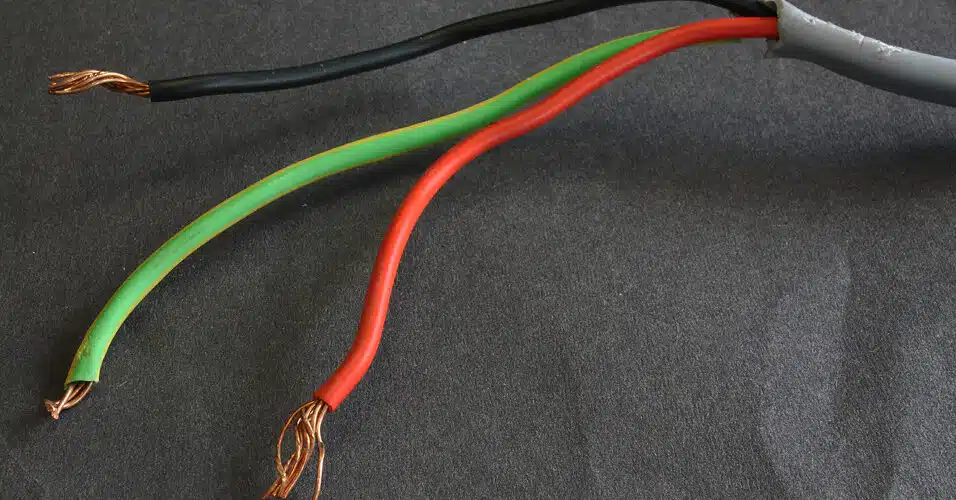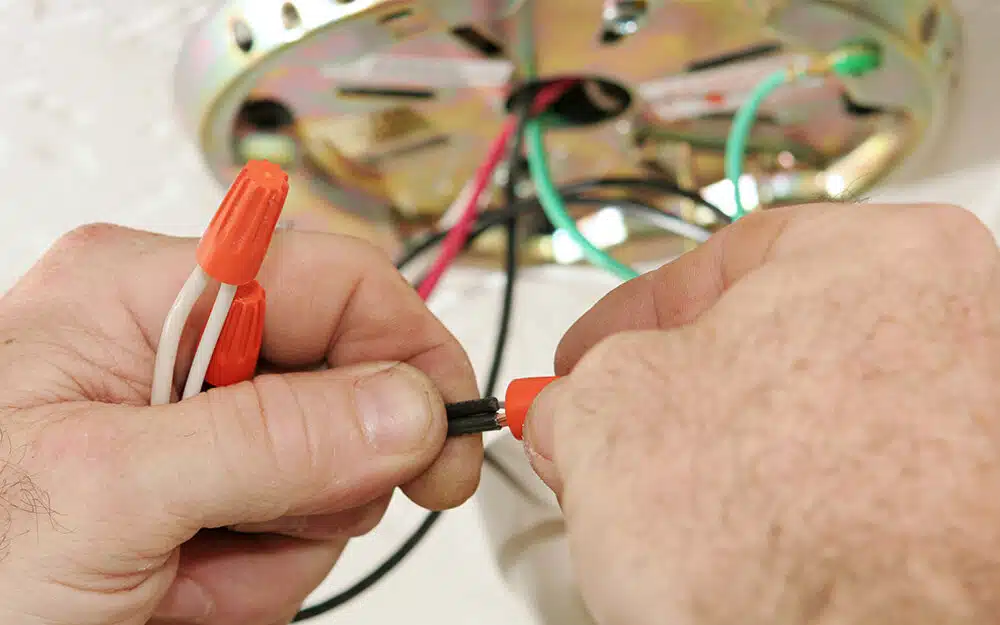Table of Contents
How To Connect Red Black White And Green Wires?
How To Connect Red Black White And Green Wires? In residential wiring, black wires carry electricity from the breaker box to switches and outlets. They are also referred to as hot wires. Black wires with white or red tape or striping indicate they are live and should be treated with extreme caution.
White and gray wires are neutral conductors, connecting to a single conductive piece of metal called a neutral bus bar in the breaker box. Green wires, if present, are grounding wires.
Red Wire
When dealing with electrical wiring, wires are color-coded for a reason. Black wires always indicate a hot, or positive, leg of current, and red wires can sometimes be used as a second hot for appliances that need two hot legs, such as a 240-volt appliance like an air conditioner. Using the wrong colored wires can put you and your family at risk of electric shock or even house fire. If you don’t understand the differences between wire colors, it’s easy to get them confused.
For safety reasons, you should always assume that any black wire is hot and turn the breaker off at your home’s breaker box before working on any wiring project. Always use a voltage meter to test for electricity before touching any live wires.
Black wires usually carry power from your household circuit to light fixtures and other devices. For a simple light and switch circuit, there will only be one black lead in the electrical box. The line from the fixture will connect to that same black wire, and you’ll need another wire (usually red) to allow the switch to control the light.
If there is a red wire in the electrical box. You can connect it to the black wire from your household circuit with a wire cap. Make sure that the cap is secure, so no metal shows through the cap when tightened. Then, wrap the black wire from the light and the bare ground wire (if there is one) together with a wire cap and push them into the electrical box.
Black Wire
Electrical wires are wrapped in colored insulating casings to tell you what each wire is for and what it’s connected to. The colors are defined by the National Electrical Code (NEC) and have specific meanings.
Black is the color used for wires that carry current to a light or appliance. This is also called a “hot” wire. While it isn’t required by the NEC that hot wires be black, this is typically what you’ll see in most homes. There are exceptions, such as a red wire that is used as a second hot wire in 240-volt circuits or to interconnect hardwired smoke detectors.
Other colors, such as yellow and blue, are used less frequently but still carry power. You’ll most often see them as switch legs for ceiling fans, structural lights, and outlets paired with light switches. Blue and yellow are also used for three- or four-way switches.
When you connect a light fixture, you should first use a multimeter to check whether the red wire has voltage. If it does, then use pliers to twist the black wire from your house circuit clockwise together with the black wire from your light. Once the connections are secure, twist on a wire cap and push it into the box. Then mount the light. If you don’t have a multimeter, test each wire with a non-contact voltage tester before touching them.
White Wire
Electrical wiring carries electricity to switches, outlets, and lights throughout your home. Different wires accomplish different tasks, and their purpose is indicated by the color of their insulating casings. Black wires, for example, are always hot and carry power from your breaker panel to a switch or outlet. Red wires are often used as a secondary hot wire for things like 220-volt outlets, or to connect two hardwired smoke detectors so that when one goes off, the other will follow suit.
When you see a white wire with a gray or bare copper stripe, it’s a neutral wire, AKA a grounding conductor. This wire is usually wrapped in plastic or rubber, but it can be uncovered as well. Grounding conductors are important because they help keep you and your family safe from electrocution.
When working on any electrical project, turn off the power at the breaker box with a voltmeter or voltage tester. Next, use a pair of pliers to twist the bare grounding wire from your light fixture clockwise together with the corresponding black wire from the house circuit, and then cap them. Make sure no metal shows outside of the wire caps. Your electrician will likely do this as well when he or she is changing your lighting fixtures.
Green Wire
If you have a light fixture with a green wire, it is the grounding wire that connects to the black or white wire on your house circuit. It keeps your home electrical system from having power surges that can cause fires. This wire will have either bare copper or green plastic insulation. If the green wire is bare copper. Twist it clockwise together with the corresponding black or white wire on your house circuit and then screw on a wire cap. You can then push the wires into an electrical box.
You may also see red wires, which are used just like black wires. They can serve as secondary wires on 240-volt outlets. Or as connections between smoke detectors that are hardwired into your home. They can also be found in ceiling fan installations, where they connect switches for the fan.
While these aren’t hot wires, they should still be treated with caution because they may carry current. You can test them with a voltage meter. If you have a multimeter, you can place the red side of the voltmeter on each black wire and the black side on the green one. The reading should be around 120 volts to indicate that they are alive. You can also use the meter to test for voltage on neutral wires (white or gray). These are the wires that return electricity to the service panel.






Add comment